Mahdi Motagh's presentation at DLR EO Symposium

Prof. Mahdi Motagh gave a talk at DLR Earth Observation Symposium at Bonn, Germany on 27 June. The talk was on "Disastrous consequences of geotechnical instabilities due to open-pit mining: first results from project SARKI4 Tagebaufolgen "
Vishal Mishra joined GFZ as Visiting Researcher
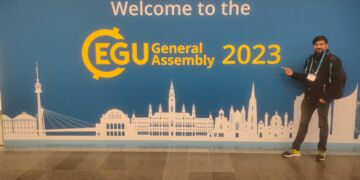
Vishal Mishra, currently affiliated with Indian Institute of Technology Roorkee, India joined our research group as Visiting Researcher under HIDA Helmholtz Fellowship. He works on application of SAR Interferometry and UAV Remote Sensing for natural hazards. He is ultilising semi-supervised learning for Landslide Detection on optical images for Landslide Detection.
Congratulations to Dr. Mimi Peng

On 8th June 2023, Mimi Peng successfully defended her thesis at CHANG’ AN University in China. She did her PhD under the supervisions Prof. Zhong Lu, Chaoying Zhao and Mahdi Motagh at GFZ. Congratulations Dr. Peng!
InSAR analysis for Syria/Turkey Earthquake
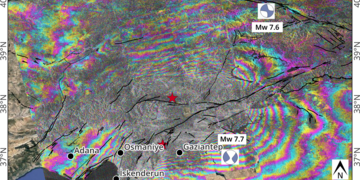
On 6th February 2023, two large earthquakes of Mw 7.8 and Mw 7.5 struck southeast Anatolia causing unseen devastation in terms of building collapses and fatalities in south Turkey and north Syria.
SAR and optical remote sensing acquisitions from .. (here)
Shagun won Outstanding Presentation Award at IEEE-MIGARS
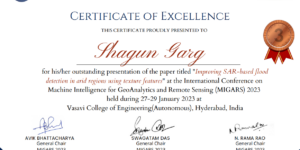
Big congrats to Shagun and the amazing team of co-authors for taking home the Outstanding Presentation Award at MIGARS IEEE. The topic of talk was ‘Improving flood detection in Arid regions using texture’. This is a collaborative study with our amazing team and funded under the framework of the project ‘AI4Flood’ by Helmhotz AI. Well done team !!
Zhuge's methodology on 4D post-failure slope instability made into ISPRS Int. J. Geoinf.
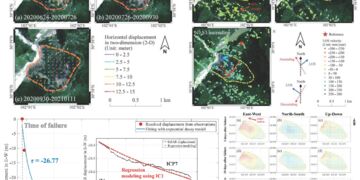
We proposed a new methodlogy to derive 4D displacement field related to post-failure slope instability by combining results from optical and radar data together with a relaxation model. The proposed framework could be applied using multi-sensor datasets and monitoring other multi-scale ground deformation. .. (here)
Researcher from GFZ Potsdam Ventures to Joshimath to study recent land movements
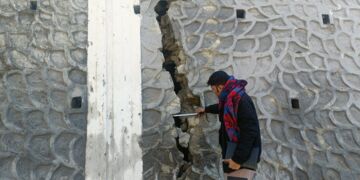
Joshimath, a small town in the Indian state of Uttarakhand, has been experiencing land subsidence and cracking in homes due to recent tectonic activity. The local residents have reported cracks in their homes, and GFZ Potsdam researcher Shagun Garg visited Joshimath to collect data and understand the cause of the subsidence in order to help mitigate the damage. (here)
Shagun receives IEEE student travel grant to present his work at MIGARS, Hyderabad

Shagun has been awarded an IEEE student travel grant to attend the MIGARS conference in Hyderabad. He will be presenting work on improving flood detection algorithms in arid regions, done in collaboration with other researchers. This work is funded by Helmholtz AI project AI4FLOOD project (here)
Mahdi's Check Dam paper in Natural Hazards
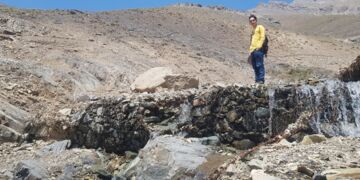
On July 18, 2022, an unexpected rainfall and flash flood struck the Emamzadeh Davood village in northwestern Tehran, the capital city of Iran, claiming the life of at least 23 people. In this brief communication, we report results from a recent investigation carried out by field surveys and remote sensing data, highlighting the role of anthropogenic factors and catastrophic failures in a series of check dams in intensifying the impacts of the 2022 Emamzadeh Davood event. Read more (here)
Zhuge's Corner reflector paper got published in GRSL
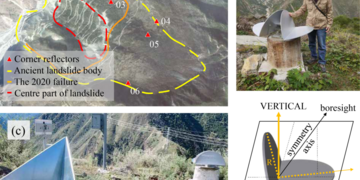
We have designed and investigated a small dihedral corner reflector for monitoring landslide creeps. It is designed with the advantage of being inexpensive, easy to install and maintain, and used for both ascending and descending satellite orbits. Although it was initially to be used in high-resolution datasets, this small reflector could also be applied in medium-resolution images such as Sentinel-1 during our experiments. Read more (here)
Zelong's paper made it to JGR Solid Earth
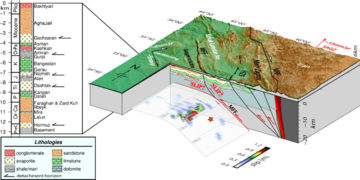
In this study, we use InSAR to investigate the fault geometry and afterslip evolution within 3 years after the mainshock following the 2017 Mw 7.3 Sarpol-e Zahab Earthquake .Because the coseismic rupture propagated along a basement-involved fault while the postseismic slip may activate the frontal structures and/or shallower detachments in the sedimentary cover, the 2017 Sarpol-e Zahab earthquake may act as a typical event which contributes to both of the thick- and thin-skinned shortening of the Zagros in both seismic and aseismic way. Read More
KStA sits down with Mahdi Motagh to discuss risks associated with open-pit mining in Hambach, Germany

Kölner Stadt-Anzeiger (KStA) – a German daily newspaper published in Cologne speaks with Prof. Dr. Mahdi Motagh to discuss vulnerability and risk issues caused by subsidence in open-pit mining near Hambach forest. The interview was based on the work published in Int. J. of applied EO and geoinformation.
Magda's subsidence work on Maceió, Brazil got featured in Süddeutsche Zeitung

Magdalena’s work on salt-mining induced subsidence in Maceio, Brazil (published in scientific reports) got featured in Süddeutsche Zeitung – one of the largest daily newspapers published in Munich, Bavaria, Germany. Read the article here
F.A.Z highlights Wei Tang's mining subsidence paper in latest edition
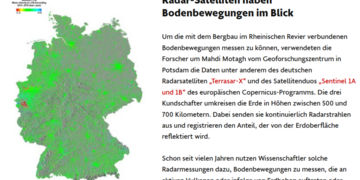
Wei Tang’s work to map to map ground displacement and slope instability over three open-pit mines, namely, Hambach, Garzweiler and Inden, in the Rhenish coalfields of Germany to provide long-term monitoring solutions based on the journal article published last year got featured in FAZ; “Frankfurt General Newspaper” … Read more
Monitoring Rhenish coalfields, Germany using multi sensor Coherence SBAS approach
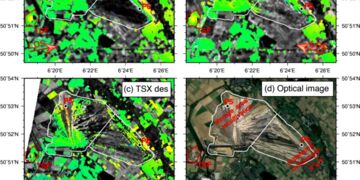
The main objective of this work is to map ground displacement and slope instability over three open-pit mines, namely, Hambach, Garzweiler and Inden, in the Rhenish coalfields of Germany to provide long-term monitoring solutions for open-pit mining operations and their surroundings using S1, TSX using coherence based SBAS method (here)
Groundwater induced subsidence in Taiyun basin China - Wei Tang's RSE paper is out!
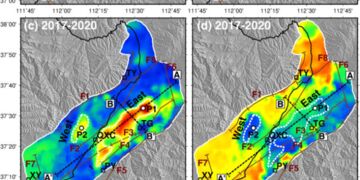
Interesting subsidence – rebound phenomenon due to groudwater changes. Read More
Shagun Garg interviewed by AAJ-TAK on Delhi Subsidence

AAJ Tak, a leading Hindi newspaper in India, interviewed Shagun about his latest scientific article. The interview was conducted by a journalist from the newspaper, who asked him a series of questions about the article and the research. Read the article here (only in Hindi)
China subsidence paper in 'The Guardian'
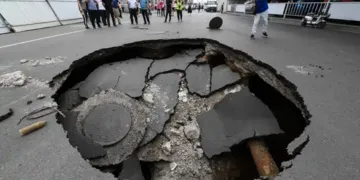
Fissures and sinkholes are the norm in China’s Shanxi province. Intensive agriculture combined with major coal production has put huge pressure on water resources and sucked the earth dry, leaving the city of Taiyuan, with a population of 5 million, and the surrounding area suffering some of the highest subsidence rates in the world. Pipelines, roads, bridges, and railways need constant repairs, and gaping cracks in buildings have resulted in entire communities having to be rehoused.
Since 2003, the Chinese government ... Read more
